How much does a bag of sand weight?
When you purchase a sandbag, you’re bombarded with multiple choices. Numerous sizes, dimensions, weights, materials, and sandbag heights make it difficult to choose the perfect pick.
Do you also want to make a sand bag but cannot find a suitable dimension and weight for yourself? We understand your problem. After all, the wide variety makes it difficult to gauge the effectiveness of a specific bag.
But don’t worry. Here’s a perfect guide to teach you about the various dimensions and weights of the mighty sandbags.
Do you want to know more about this topic? We also have an article talking about how to make a sand bag.
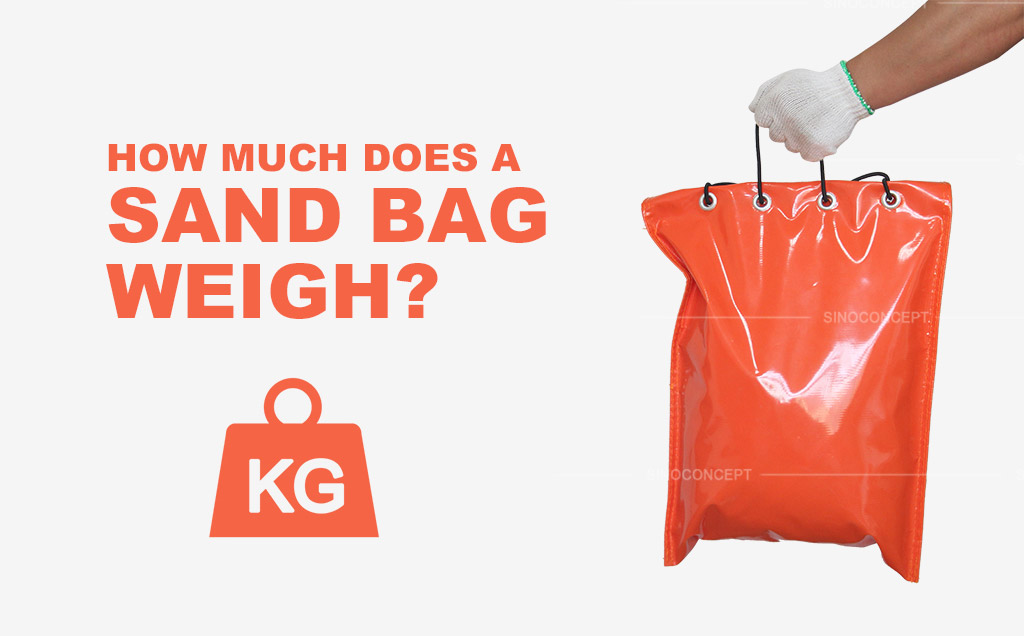
Types of sandbags
Times have changed… You see, burlap bags were things of the past. It’s not that they are not common nowadays, but there has been the creation of special sandbags with varying sizes. Hence, let’s first identify various types of sandbags.
Burlap bags/hessian bags
Burlap is the most traditional sandbag made using jute plant fibres. Since they are plant-based, these rectangular burlap bags are biodegradable – breaking down within 6-8 weeks.
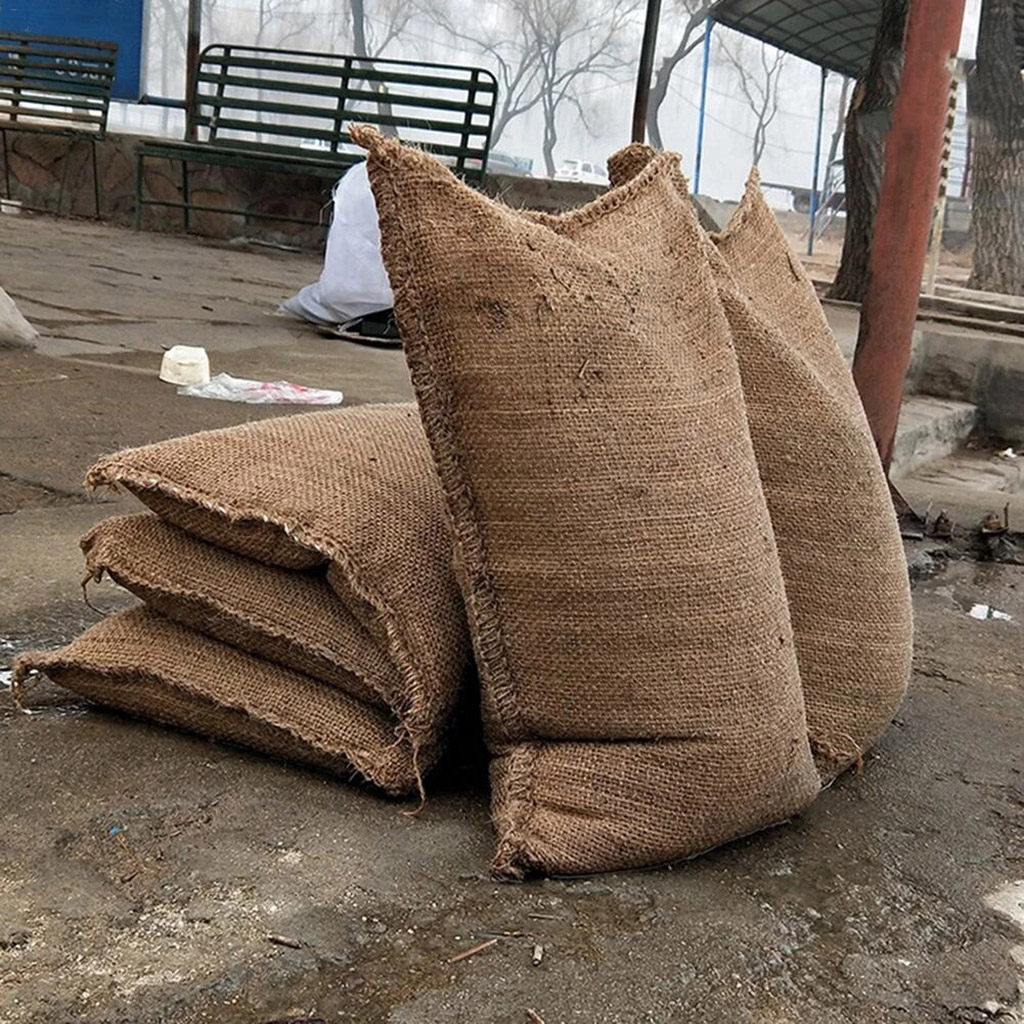
Polybags
Woven polypropylene bags have been around for a while. These plastic bags are special since they are UV–treated and have sun protection.
Hence, woven bags are durable and reusable for over two years until they wear off.
Some even have hooks, straps, and a zipper that safely encloses the bag and protects the bag filler.

PVC Bags
Let’s talk about PVC sandbags manufactured and designed to last a long time.
These PVC bags are UV-treated, and they won’t wear out soon. Furthermore, PVC bags have a bright orange colour, making them easier to spot on roadways that are used for weighing down sandbags.
Thanks to the tying string, you can even hold plenty of filler material within them and carry these bags easily.
Check out Sino Concept to learn more about sturdy PVC sandbag designs.
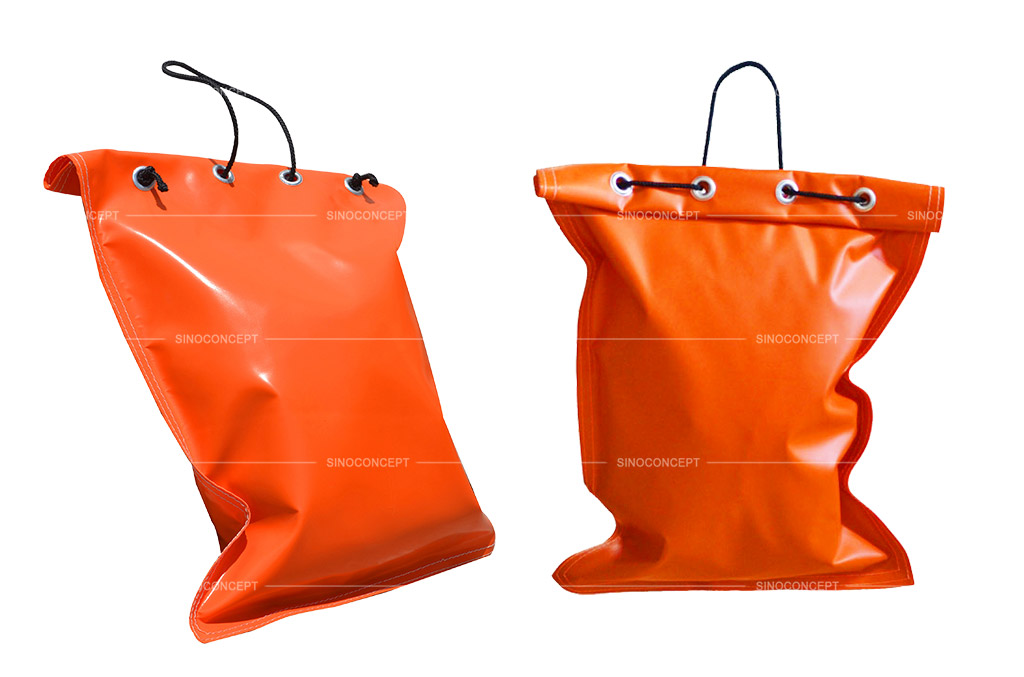
Bulk bags/Jumbo bags
These heavy-duty bags differ slightly from sandbags. Usually, these strongman sandbags are manufactured using woven fabric and can weigh as much as 1000 kilograms.
Therefore, they are useful in anchoring ships or weighing down stop signs. These are custom bags since companies can tweak their sizes to hold varying amounts of weight.
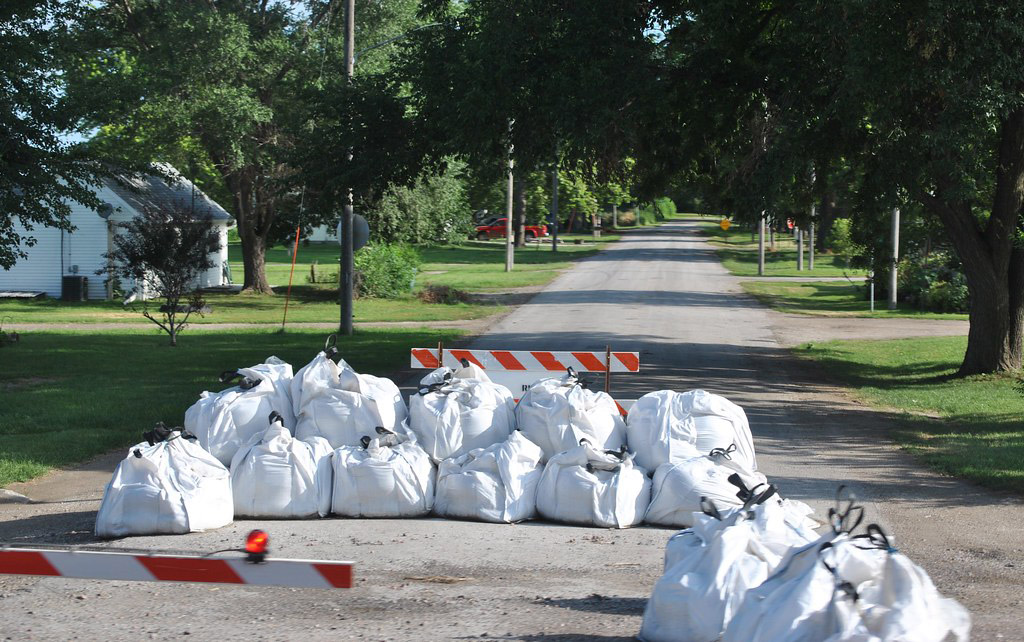
You have already read a good part of this article, 👀
We've
got the impression that you like it. 🙂
👇🏻
IF YOU ARE LOOKING TO WORK DIRECTLY WITH A MANUFACTURER,
FEEL FREE TO CONTACT US. WE ARE VERY HAPPY TO HELP!
Dimensions of sandbags
Having identified various sandbags, let’s discuss their dimensions. The most common size for a standard sandbag is 14 by 26 inches or 18 by 30 inches.
However, the dimensions can go up to 80 by 48 inches for enormous bulk bags.
Weights of sandbags
An empty sandbag weight is insignificant, allowing anyone to lift it easily. However, the weight increases when you fill it with one of the filler materials.
Usually, a typical sandbag with dimensions of 14 by 26 inches can hold up to 40-50 pounds or precisely 18 kilograms.
Although bags of sand can be overfilled to a maximum of 60-75 pounds, filling them a half or 2/3rd is recommended since overfilling can create gaps, causing the water to overflow.
Similarly, a bulk bag can weigh up to 1,000 kg (2,200 lbs) – a weight close to one ton. Well, that’s massive, and bulk bags require a lot of manpower to move.
Fillers of sandbags
The volume of material also plays a role in determining the weight of a sandbag. In most cases, even a bulk bag weighs only 6-7 pounds. But when it’s filled with a filler material, it can turn into a giant weighing up to 2,200 pounds.
Here are some common fillers:
- Beach sand
- Playground sand
- Gravel/Ballast
- Aggregates
- Topsoil compost
- Mulch
There are different types of sand, but it’s always better for sandy soil since it doesn’t let the water seep. Usually, coarse sand and gravel are impermeable and can cause water to seep.

Making a sandbag wall
Let’s discuss the number of sandbags and the total weight required to create a sandbag wall.
For weighing down signages, a single sandbag is enough. However, if you’re creating a sandbag wall to fight off flooding problems, you’ll require a minimum of 60 and a maximum of 78 sandbags to create a 4-foot high and 10-foot wide wall.
Generally, you’ll require one cubic yard of sand to fill 75 bags weighing 40 lbs.
Here’s the process of creating a sandbag wall:
- To fill the sandbag, you’ll require at most 2-3 helping hands, a shovel, a wheelbarrow, a trolley, or barrels for carrying sand.
- Clear the area where you will place the bags
- Start laying sandbags in a pyramid shape to provide a strong foundation
- Stomp on sandbags to create an interlocking bag design with no gaps
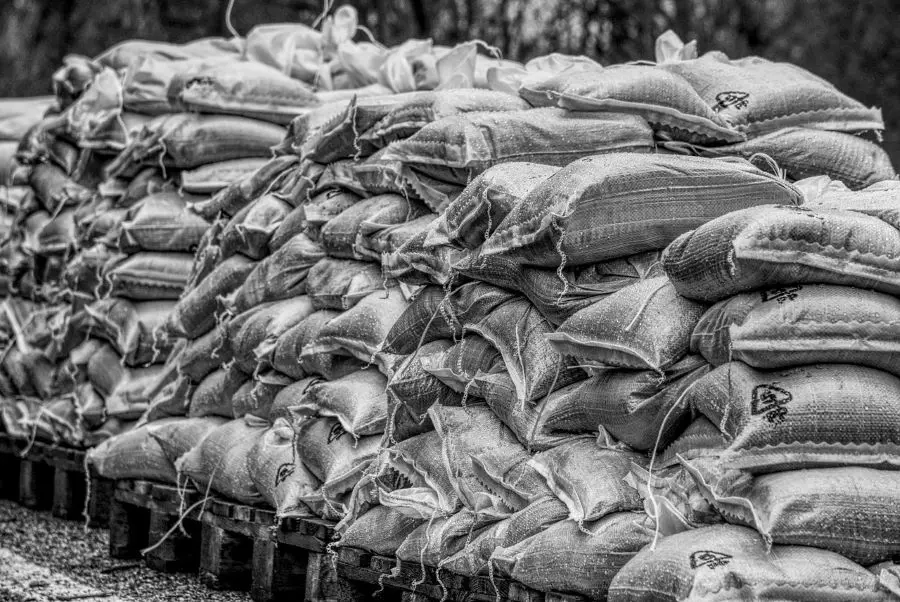
Conclusion
Filling sandbags to an ideal weight is important, as under/overfilling can destroy the bag’s purpose. Fortunately, with this little guide, you’re all set to purchase a suitable bag for fulfilling your needs.
To purchase durable sandbags that last for a reasonable time and are strong, reach out to Sino Concept – the manufacturers you need for various traffic control devices.
Reach out today!
👇🏻
IF YOU ARE LOOKING TO WORK DIRECTLY WITH A MANUFACTURER,
FEEL FREE TO CONTACT US. WE ARE VERY HAPPY TO HELP!





















